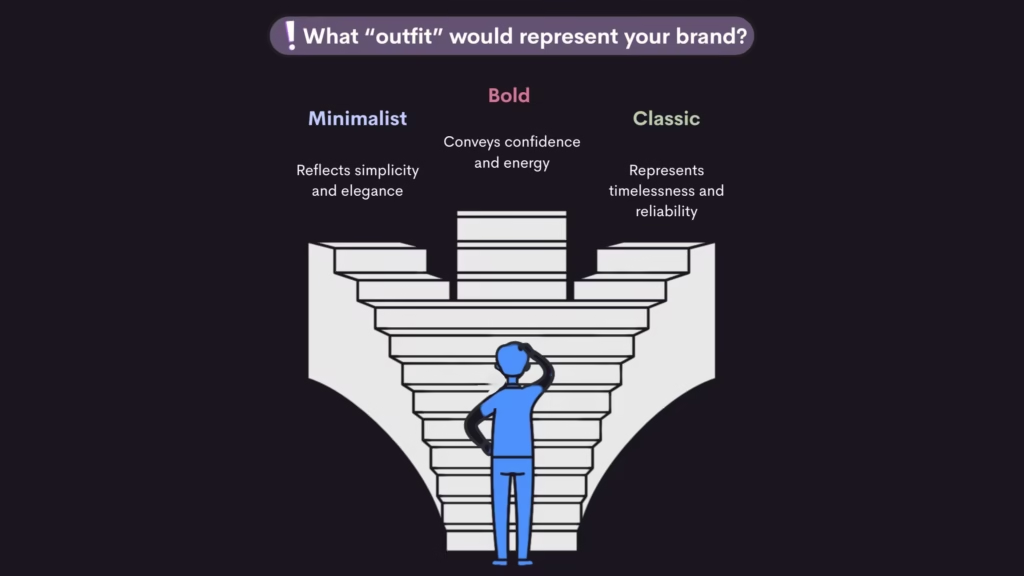In this guide, you’ll explore how different colors affect trust, perception, and emotion in marketing—and how to choose a palette that truly fits your brand’s personality.
Ever landed on a website and just… felt calm? Or maybe your eyes zoomed to that red SALE sign like a magnet? That is no accident — that’s color psychology in marketing working its magic.
We don’t always notice it, but colors speak to our brains before we read a single word. They build trust, trigger emotion, and nudge us toward action — all in under a second. Let’s decode how colors aren’t just for aesthetics — they’re persuasive tools every brand (including yours) should use wisely.
Color Psychology in 10 Seconds: Your Brain’s Instant Reaction
According to studies, people form their first impression of a website in less than 90 seconds — and up to 90% of that impression is based on color alone.
Why? Because your brain uses colors as shortcuts.
A calm blue? Safe.
A fiery red? Act fast.
We react emotionally, not logically — and smart websites use this beautifully.
The Emotion Palette: Color Psychology in Marketing Explained
Let’s break down the color personalities:
| Color | Emotion | Where It’s Used / Why |
|---|---|---|
| Red | Urgency, Passion, Energy | Perfect for clearance sales, food delivery, or bold brands that want fast action. |
| Blue | Trust, Peace, Stability | Loved by banks, tech, and health brands — it calms the brain and builds loyalty. |
| Yellow | Optimism, Alertness, Cheer | Grabs attention and adds positivity — but too much can overwhelm. |
| Green | Balance, Health, Growth | Common in wellness, eco brands, and productivity tools — feels natural and calming. |
| Orange | Playful, Energetic, Friendly | Great for calls-to-action, youth brands, or sites that want to feel fun and open. |
| Purple | Luxury, Creativity, Mystery | Used in beauty, education, and creative industries — elegant with a touch of magic. |
| Black/White/Grey | Clean, Modern, Bold | Go-to for minimalist or luxury brands — classic never goes out of style. |
Mini Case Study: Why Dunkin’ Doesn’t Use Boring Colors
Ever wonder why Dunkin’ Donuts went with bright pink and orange instead of classic coffee browns?
It’s because their brand screams energy + playfulness, not just caffeine. Orange sparks appetite and action, while pink feels bold and youthful. Together, they stand out in a sea of coffee brands.
💡 Result? Dunkin’ isn’t just a place to grab a donut — it feels fun, even before you order.
Warm vs Cool Colors: Set the Mood of Your Website
- Warm colors (reds, oranges, yellows) = Excitement and urgency
- Cool colors (blues, greens, purples) = Calm and trust
Use warm tones when you want quick action (sales, signups), and cool tones when you want users to stay longer and feel safe (blogs, wellness, tech).
💡 Tip: Try a warm button (like orange or red) on a cool site to balance action + trust. It works wonders.
How Color Psychology in Marketing Boosts Conversions
Even one tiny color tweak can change everything.
- Red buttons often get higher click rates than green ones
- Blue backgrounds improve readability and trust
- Yellow banners grab attention for announcements or deals
Color can guide the eye, create contrast, and trigger action without shouting. That’s what makes emotions as colors a powerful part of your design toolkit.
Designing with Empathy: Don’t Forget Accessibility
Color’s power also means we have to be mindful:
- Use strong contrast for text (light on dark, dark on light)
- Don’t rely on color alone to show meaning (e.g., “red = error”)
- Use tools like WebAIM Contrast Checker to test your design
Being accessible isn’t just kind — it’s also smart SEO and boosts your UX score.
Build Your Brand’s Color Story
So, how do you choose the right color for your brand?
Think of your core emotion: Calm? Exciting? Empowering?
Pick:
- 1 main brand color
- 1 neutral (white, grey, beige)
- 1 accent for buttons, highlights, and action
Then ask:
👉 If your brand was a person, what outfit would they wear?
Minimalist black? Playful yellow? Dreamy lavender? You’re designing a personality, not just a palette.

Want to learn more about psychology related to design? You’ll also love our post:
Digital Psychology: 7 Ways It Shapes How You Think, Click, and Interact Online
💬 Final Thoughts
Your website’s color palette isn’t just a vibe — it’s a color psychology in marketing strategy. Want your brand to feel like a story, not just a site? Start with color.
Tell us your favorite brand-color combo in the comments!
And…
Imagine your brand as a dessert. What color is it? Why?
Is it calm like mint, or bold like red velvet?
Colors are feelings — pick the one that tastes like your brand.
Frequently Asked Questions
Color psychology in marketing is the study of how colors affect people’s impressions, emotions, and choices. Companies employ it to guide the vibe of their websites and products: bright yellows inspire hope, blazing reds promote urgency, and calm blues foster trust. It’s all about setting the correct feeling for the correct audience.
Color theory assists marketers put colors together in ways that get individuals interested and make them feel certain emotions. You can employ color theory to help you pick a strong call-to-action button or an appealing brand palette. It helps you balance colors for contrast, unity, and emotional effect. It makes pictures into strong ways to talk to people.
Different colors can make people feel and act in certain ways, according to color psychology theory. For instance, the color green is connected to health and growth, while the color black is connected to wealth and power. Cultural backgrounds have different reactions, but brands can use general patterns to get customers to feel something without declaring anything.
There’s no one-size-fits-all answer, but blue is often seen as the most powerful color in marketing psychology. It’s trusted, calming, and dependable — which is why banks, tech companies, and healthcare brands love it. But red is powerful too — bold, passionate, and impossible to ignore. The “most powerful” color depends on your brand goal.
Start by asking: What emotion do I want people to feel? Then pick colors that match that mood. For trust, use blues. For excitement, try reds or oranges. For wellness, greens and soft neutrals work well. Use consistent color choices across your branding — from logos to website to packaging — to build a strong emotional identity.

2 Responses